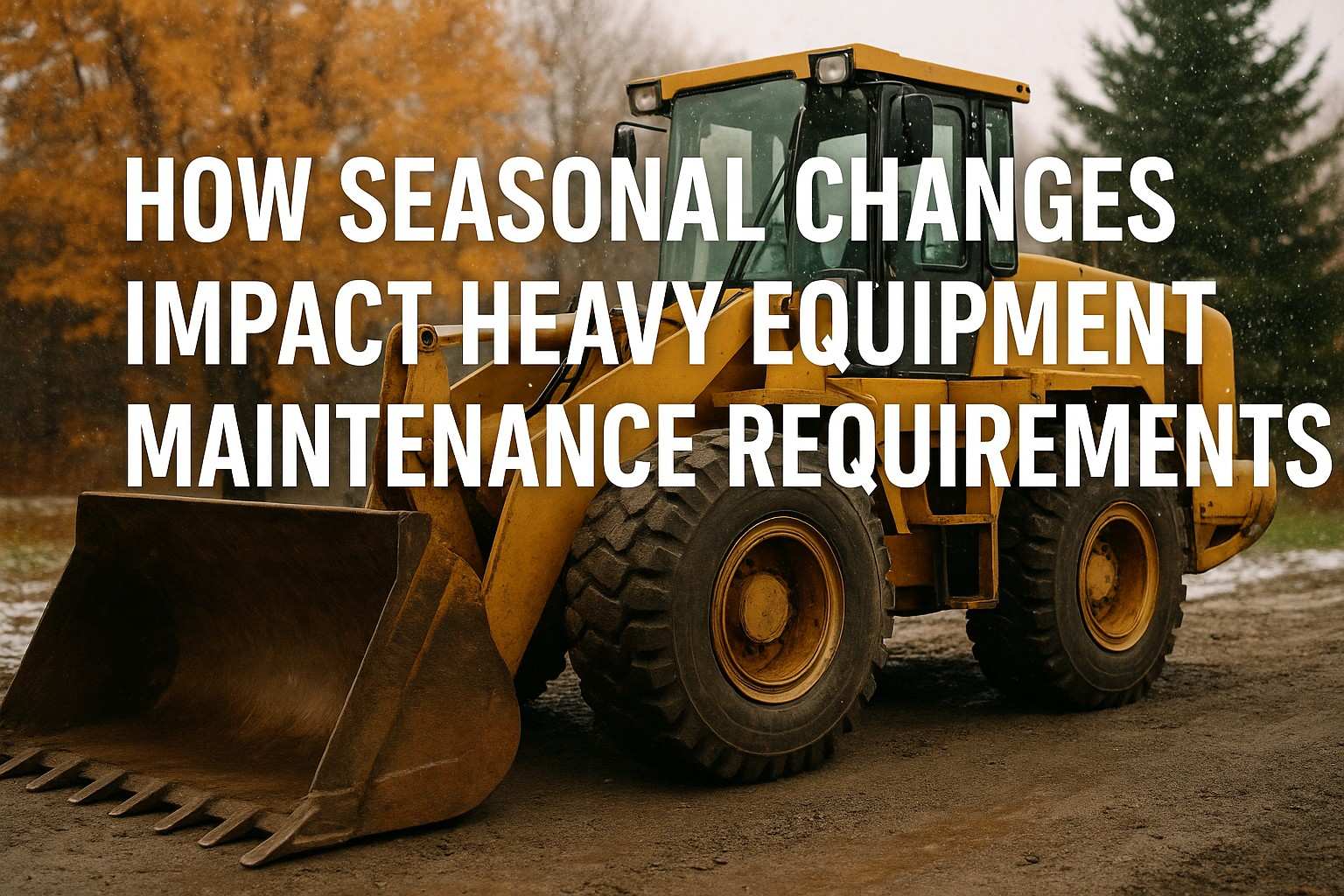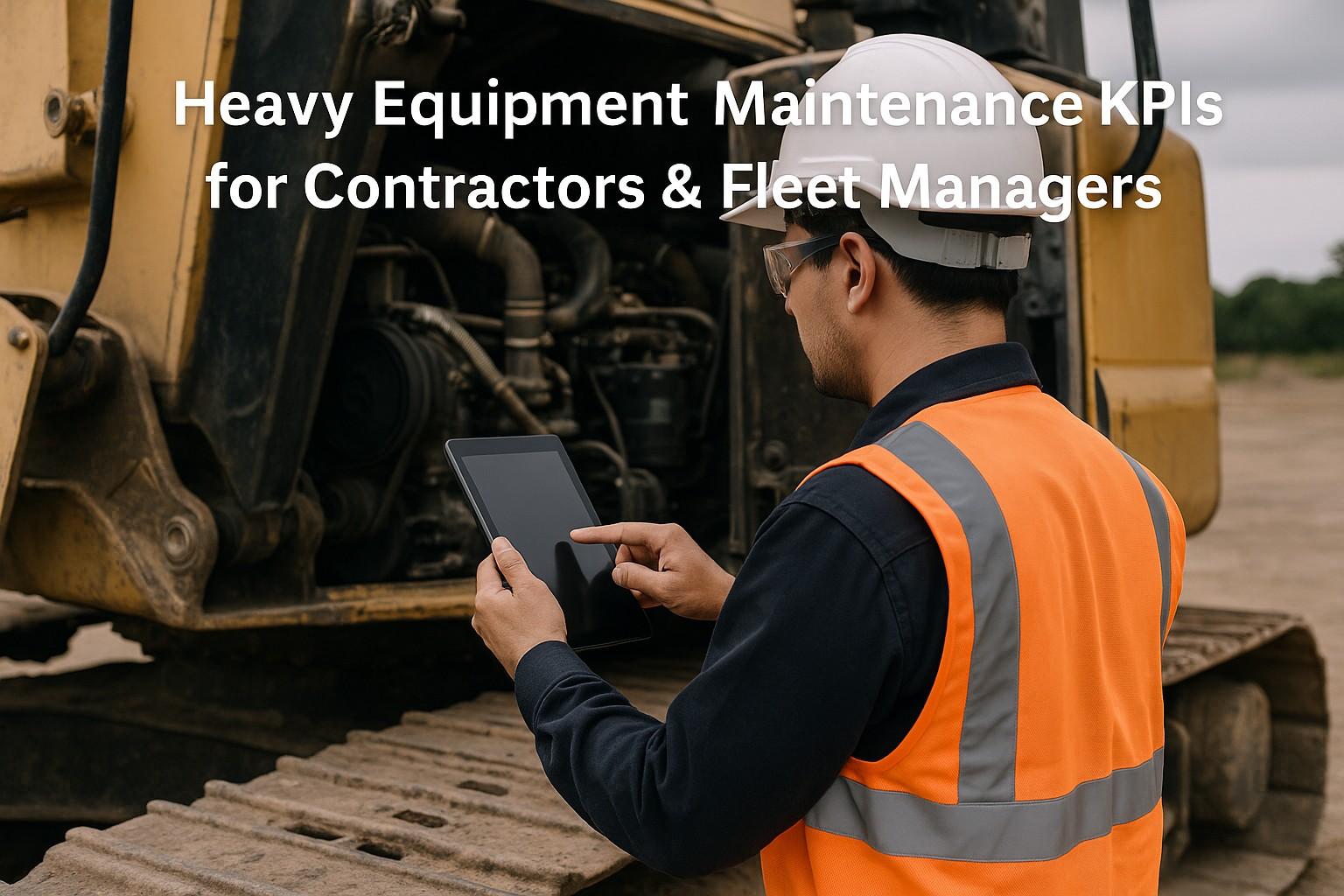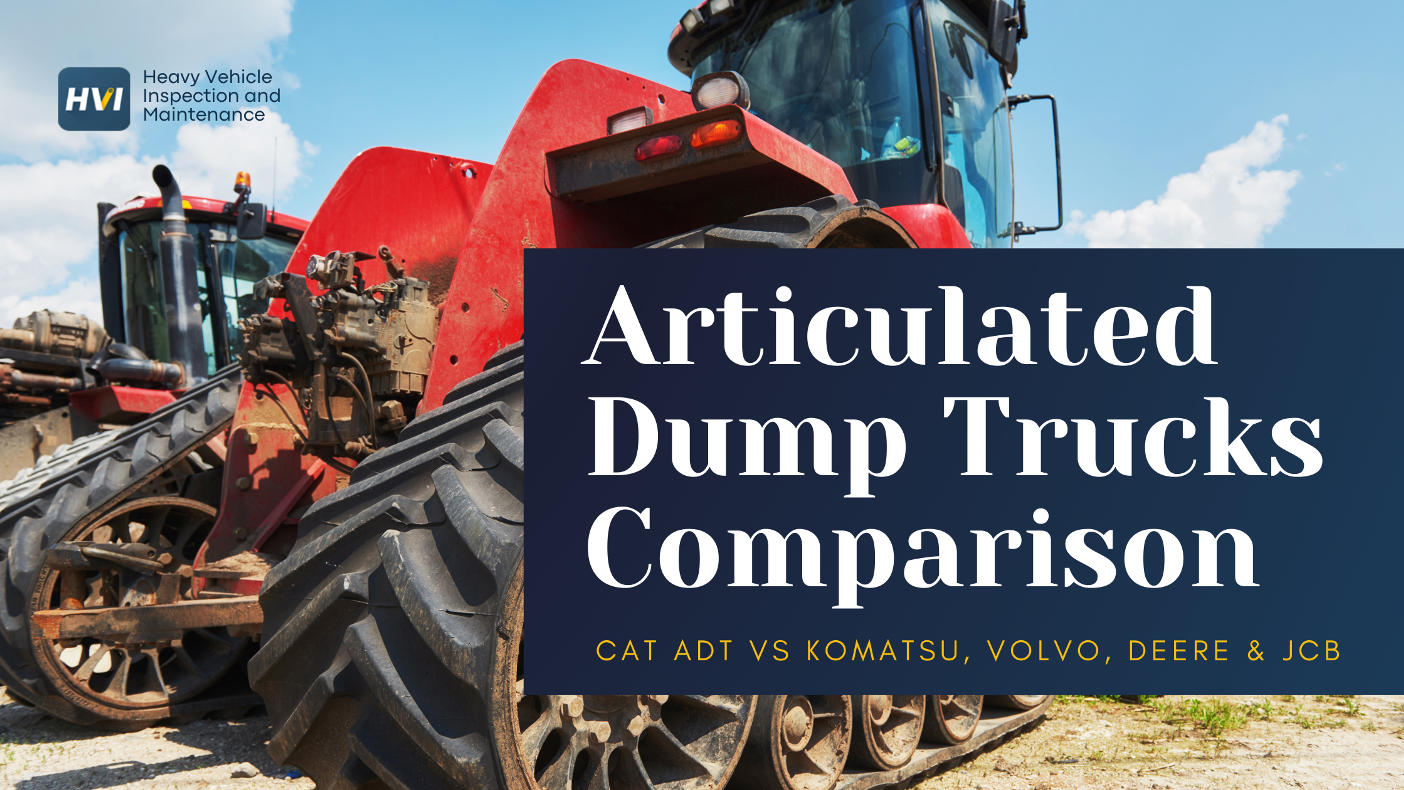In today's fast-paced construction industry, staying competitive means embracing digital transformation and innovative technologies. Equipment integration has emerged as a game-changing approach that's revolutionizing how construction firms manage their projects, assets, and workflows. From GPS tracking systems monitoring equipment locations to fuel sensors optimizing consumption, integrated technologies are creating smarter, more efficient job sites. But what exactly is equipment integration, and why is it becoming essential for modern construction project management?
Understanding Equipment Integration in Construction
Equipment integration refers to the interconnection of construction equipment, tools, software systems, and data platforms into a unified ecosystem that enables seamless communication, monitoring, and management. Unlike traditional siloed approaches where each piece of equipment operates independently, integrated systems create a network of assets that share information in real-time, providing unprecedented visibility and control over construction operations.
The Role of OEMs in Equipment Integration
Original Equipment Manufacturers (OEMs) have become pivotal players in the equipment integration ecosystem. Leading construction equipment manufacturers now build integration capabilities directly into their machinery, offering:
- Factory-installed telematics systems
- Proprietary equipment monitoring platforms
- APIs that allow data sharing with third-party software
- Advanced diagnostics that communicate with maintenance systems
- Cross-brand compatibility protocols for mixed fleets
Heavy Vehicle Inspection (HVI) Integration with OEMs
Heavy Vehicle Inspection (HVI) represents the deepest level of connectivity between construction firms and their OEM partners. HVI (www.heavyvehicleinspection.com) goes beyond basic data sharing to create strategic technological alliances that deliver exceptional value. These advanced integration models include:
- Direct API connections to OEM service departments for automated maintenance scheduling
- Real-time parts inventory visibility and automatic reordering systems
- Operator performance data sharing for customized training programs
- Equipment lifecycle optimization through predictive replacement planning
- Co-development of custom applications for specialized construction workflows
Construction companies that achieve HVI status with their primary OEM partners report significantly higher equipment uptime, preferential service arrangements, and early access to new integration capabilities. This level of integration transforms the traditional buyer-seller relationship into a technology partnership focused on mutual success.
The involvement of OEMs has accelerated adoption by eliminating many of the retrofitting challenges previously associated with equipment integration. Companies like Caterpillar, Komatsu, John Deere, and Volvo Construction Equipment now compete not just on the quality of their machinery, but on the sophistication of their integrated technology offerings.
Modern construction technology allows for the connection of everything from heavy machinery and power tools to safety equipment and material handling systems. This connectivity is achieved through various technologies, including:
- IoT devices and sensors that collect real-time data
- Telematics systems that transmit equipment data wirelessly
- Construction software platforms that centralize information
- Cloud-based solutions that enable access from anywhere
- Mobile applications that put information in the hands of field workers
The Technology Behind Construction Equipment Integration
IoT Devices and Sensors
The foundation of equipment integration lies in the Internet of Things (IoT). Smart sensors attached to construction equipment collect critical data points such as:
- Location and movement tracking via GPS tracking systems
- Engine hours and utilization rates
- Fuel sensors monitoring consumption and efficiency metrics
- Maintenance needs and warning indicators
- Environmental conditions at job sites
GPS tracking systems have become particularly crucial for equipment integration, enabling precise location monitoring of assets across multiple job sites. These systems not only prevent theft and unauthorized use but also optimize travel routes, reducing idle time and improving deployment efficiency.
Similarly, advanced fuel sensors provide granular data on consumption patterns, helping project managers identify inefficient equipment operation, excessive idling, or potential maintenance issues before they cause costly breakdowns. Many contractors report 10-15% fuel savings after implementing sensor-based monitoring systems.
These sensors transform ordinary machinery into smart, connected assets that continuously broadcast their status and performance metrics, creating a data-rich environment for informed decision-making.
Construction Software Platforms
Specialized construction software serves as the central nervous system of an integrated equipment ecosystem. These platforms:
- Aggregate data from multiple equipment sources
- Provide dashboards for real-time monitoring
- Enable fleet management functions
- Facilitate maintenance scheduling
- Generate reports on productivity and performance
Benefits of Equipment Integration for Construction Management
Enhanced Productivity and Efficiency
When construction equipment is integrated into a cohesive system, projects experience significant productivity gains:
- Equipment utilization increases by 15-30% on average
- Idle time reductions of up to 40%
- Labor efficiency improvements through better coordination
- Faster project completion timelines
- Streamlined workflows across all construction phases
Real-Time Monitoring and Decision Making
Real-time monitoring capabilities transform how construction managers oversee their projects:
- Immediate alerts for equipment issues or failures
- Live tracking of equipment location and status
- Dynamic resource allocation based on current needs
- Proactive problem-solving before issues escalate
- Data-driven decision making instead of guesswork
Improved ROI and Cost Control
The financial benefits of equipment integration provide compelling ROI for construction firms:
- Reduced fuel consumption through optimized operations
- Lower maintenance costs via predictive maintenance
- Extended equipment lifespan through proper usage monitoring
- Decreased downtime and associated costs
- More accurate project budgeting and forecasting
Enhanced Safety and Compliance
Safety improvements represent another crucial benefit:
- Automated safety checks and compliance monitoring
- Operator certification tracking and management
- Equipment inspection documentation
- Hazard identification and prevention
- Comprehensive safety reporting capabilities
Implementing Equipment Integration: A Practical Guide
Assessment and Planning
The journey toward equipment integration begins with thorough assessment:
- Audit your current equipment fleet and technology infrastructure
- Identify pain points in your existing equipment management process
- Define specific goals and KPIs for your integration initiative
- Evaluate potential ROI and establish budget parameters
- Develop a phased implementation plan
Technology Selection
Choosing the right combination of technologies is crucial:
- Evaluate construction software options that support equipment integration
- Select compatible IoT devices and sensors for your equipment types
- Consider telematics providers with construction-specific experience
- Assess mobile applications for field team usability
- Ensure all solutions offer appropriate data security features
Implementation and Training
Successful deployment involves:
- Starting with pilot projects before full-scale implementation
- Establishing clear data standards and integration protocols
- Providing comprehensive training for all system users
- Creating standard operating procedures for the new integrated systems
- Monitoring early adoption and addressing challenges promptly
Continuous Improvement
Equipment integration is an ongoing process:
- Regularly analyze performance data to identify optimization opportunities
- Incorporate user feedback into system refinements
- Stay current with emerging technologies and integration possibilities
- Benchmark results against industry standards
- Scale successful approaches across your organization
Case Study: Equipment Integration Success
A mid-sized commercial construction firm implemented comprehensive equipment integration across their operations and achieved remarkable results:
- 22% reduction in equipment maintenance costs through predictive maintenance
- 18% improvement in overall equipment effectiveness (OEE)
- 35% decrease in idle time for heavy machinery
- $450,000 annual savings in fuel and operating costs
- 15% acceleration in project completion timelines
Their approach focused on connecting their fleet of excavators, bulldozers, and cranes with a centralized management platform that provided real-time monitoring capabilities. GPS tracking systems played a critical role in this transformation, allowing project managers to visualize equipment locations across multiple sites and optimize deployment schedules.
Additionally, advanced fuel sensors installed across their heavy equipment fleet identified patterns of excessive fuel consumption, leading to operator training initiatives that reduced fuel costs by 23%. By implementing these specialized IoT devices across their equipment fleet and integrating with their existing project management software, they gained unprecedented visibility into their operations and dramatically improved resource utilization.
Future Trends in Construction Equipment Integration
Evolving OEM Partnerships and Open Standards
The future of equipment integration will be shaped by evolving relationships between:
- Construction firms demanding greater interoperability
- OEMs developing more open integration platforms
- Software providers offering cross-brand compatibility
- Industry associations pushing for standardized protocols
- Technology consortiums creating universal data standards
We're already seeing the emergence of initiatives like the Association of Equipment Management Professionals (AEMP) Telematics Standard, which enables data sharing between different OEM systems. As these standards mature and gain wider adoption, the barriers to integration across mixed fleets will continue to diminish.
Automation and Autonomous Equipment
The next frontier in equipment integration involves:
- Self-operating heavy machinery
- Automation of repetitive construction tasks
- Robotics for specialized applications
- Drone integration for site monitoring and mapping
- Autonomous material handling and transport
OEMs are leading much of this innovation, with many manufacturers investing heavily in autonomous equipment development and creating integration pathways for these technologies to communicate with broader project management systems.
AI Agents and Advanced Analytics
Data analytics is evolving to provide even more powerful capabilities through AI Agents that automate complex processes:
- AI Agents for predictive modeling of equipment performance
- Automated resource optimization through intelligent scheduling agents
- Machine learning-powered agents for maintenance forecasting
- Pattern recognition agents identifying efficiency opportunities
- Decision support agents that automate routine management choices
These AI Agents transform massive volumes of equipment data into actionable intelligence without human intervention. For example, maintenance scheduling agents can automatically analyze sensor data from hundreds of pieces of equipment, prioritize maintenance needs, and even schedule service appointments with minimal human oversight. This level of automation represents a significant leap beyond traditional analytics, allowing construction firms to redirect human expertise to more strategic activities.
Overcoming Challenges in Equipment Integration
Technology Adoption Barriers
Construction firms often face challenges with:
- Resistance to change from traditional workflows
- Varying levels of digital literacy among workers
- Concerns about technology learning curves
- Legacy systems with limited integration capabilities
- Balancing innovation with proven methods
Data Management Complexities
The data aspect presents its own challenges:
- Ensuring data quality and consistency
- Managing the volume of information generated
- Creating meaningful insights from raw data
- Maintaining data security and privacy
- Establishing data governance protocols
Integration with Legacy Systems and Multi-OEM Fleets
Many construction companies must work with:
- Older equipment lacking built-in connectivity
- Equipment from multiple OEMs with different integration standards
- Established software systems with limited APIs
- Paper-based processes that require digitization
- Fragmented databases across departments
- Varying technology standards among project partners
The multi-OEM challenge is particularly significant for most construction firms. With fleets typically comprising equipment from 3-5 different manufacturers, companies must navigate varying proprietary systems, data formats, and connectivity protocols. Third-party integration platforms have emerged specifically to address this challenge, creating unified interfaces that can normalize data from different OEM systems into standardized formats for consistent analysis and reporting.
Conclusion: The Future of Construction is Integrated
Equipment integration represents more than just a technological advancement—it's a fundamental shift in how construction projects are managed and executed. By connecting construction equipment, software systems, and data platforms, construction firms can achieve unprecedented levels of efficiency, productivity, and profitability.
By developing this network of interconnected content, you'll not only improve your site's SEO performance but also create natural pathways for visitors to explore more of your expertise. Each linked page provides opportunities to rank for additional keywords while keeping users engaged with your content.
The construction companies that embrace digital transformation through equipment integration position themselves at the forefront of industry innovation. As IoT devices, construction software, and smart construction technologies continue to evolve, the possibilities for integration will only expand, creating even more opportunities for competitive advantage.
For construction leaders looking to thrive in an increasingly complex and competitive landscape, the question is no longer whether to implement equipment integration, but how quickly and comprehensively they can transform their operations through this powerful approach to construction project management.
Are you ready to transform your construction operations through equipment integration? The journey toward smarter, more connected job sites starts with a single step—embracing the technologies and strategies that will define the future of construction.
Frequently Asked Questions About Equipment Integration in Construction
1. What is equipment integration in construction and why is it important?
Equipment integration refers to the interconnection of construction machinery, tools, software systems, and data platforms into a unified ecosystem that enables seamless communication and management. It's important because it transforms traditional construction project management by eliminating information silos, providing real-time visibility of equipment status, and enabling data-driven decision making. Companies implementing equipment integration typically see 15-30% increases in equipment utilization, 20-40% reductions in idle time, and significant improvements in project timelines and budget performance. In today's competitive construction landscape, equipment integration has become essential for maintaining efficiency, controlling costs, and meeting increasingly tight project deadlines.
2. How do GPS tracking systems improve construction equipment management?
GPS tracking systems dramatically improve construction equipment management in multiple ways. They provide precise real-time location data that prevents theft and unauthorized use (reducing insurance costs by up to 15%), optimize equipment deployment across multiple job sites (improving utilization rates by 20-25%), enable automated geofencing for safety compliance, and generate comprehensive movement records for accurate billing and project costing. Modern GPS systems integrate with project management software to automatically update equipment availability and location, eliminating manual tracking and reducing administrative overhead. When combined with telematics data from fuel sensors and engine diagnostics, GPS tracking provides a complete picture of equipment performance and utilization that directly impacts profitability.
3. What role do OEMs play in construction equipment integration?
Original Equipment Manufacturers (OEMs) have become central to equipment integration by building connectivity directly into their machinery. Leading manufacturers like Caterpillar, Komatsu, and John Deere now offer factory-installed telematics systems, proprietary monitoring platforms, and APIs that allow seamless data sharing with construction management software. The most valuable relationships are Heavy Vehicle Inspection (HVI) partnerships (www.heavyvehicleinspection.com), where construction firms gain direct API connections to OEM service departments, real-time parts inventory visibility, and co-developed custom applications. The challenge for most construction companies is managing multi-OEM fleets (typically 3-5 different manufacturers), which requires integration platforms that can normalize data from different proprietary systems into standardized formats.
4. What are the costs and ROI of implementing equipment integration technology?
Implementing equipment integration technology typically requires investment in three areas: hardware (sensors, GPS devices, connectivity modules), software (integration platforms, data analytics tools), and implementation services (installation, configuration, training). For a mid-sized construction firm with 50-100 pieces of equipment, initial investment ranges from $75,000-$150,000, with ongoing subscription costs of $30,000-$60,000 annually. However, the ROI is compelling, with most companies achieving payback within 12-18 months. Key returns include 10-15% fuel savings through optimized operation, 20-30% reduction in maintenance costs via predictive maintenance, 15-25% decrease in equipment downtime, and 5-10% improvement in overall project profitability. Additional benefits include improved safety compliance, reduced administrative burden, and enhanced competitive positioning for project bids.
5. How can construction companies implement AI Agents to automate equipment management?
Construction companies can implement AI Agents to automate equipment management through a phased approach: First, establish a solid foundation of integrated equipment data from GPS tracking systems, telematics, and operational software. Second, identify specific processes with clear automation potential, such as maintenance scheduling, resource allocation, or fuel management. Third, deploy specialized AI Agents that can perform targeted functions like predictive maintenance forecasting, automated dispatch optimization, or anomaly detection in equipment performance. Most companies begin with maintenance scheduling agents that analyze sensor data to predict failures before they occur and automatically create service tickets. The key to successful implementation is starting with well-defined processes, ensuring high-quality input data, and gradually expanding automation as confidence builds. Companies typically see 30-40% reduction in manual equipment management tasks after full implementation, allowing staff to focus on strategic decision-making rather than routine monitoring.




